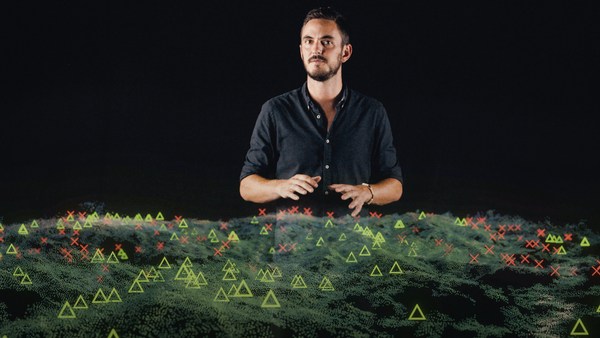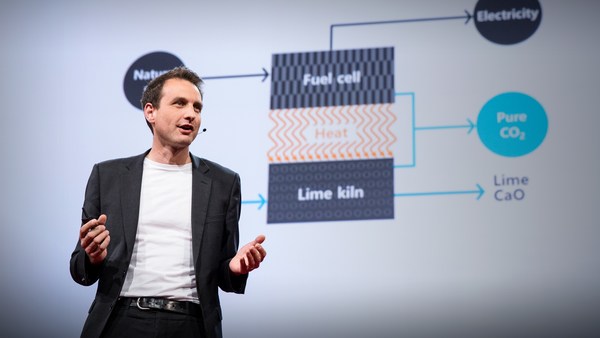Concrete is the second most used substance on earth after water, and for this reason, it has a significant environmental impact. If it were a country, it would rank third for emissions after China and USA. But in fact, concrete is an intrinsically low-impact material with much lower emissions of CO2 and energy per ton than other materials like iron and steel, even things like bricks. But because of the enormous volumes we use overall, it contributes to about eight percent of man-made CO2 emissions.
Concrete is an essential material. We need it to house people, to build roads, bridges and dams. So we can't do without it, but we can significantly reduce its carbon footprint.
Concrete is held together by cement. And cement we use today, called Portland cement, is made by heating together a combination of limestone and clay at a temperature of 1,450 degrees Celsius. But in fact, most of the CO2 emissions come not from the heating, but from the breakdown of limestone, which is calcium carbonate, into calcium oxide and carbon dioxide, or CO2.
Now we can't do without this component altogether, because nothing else is so efficient at holding stuff together. But we can replace a large proportion of it with other materials with lighter carbon footprints. Many colleagues are looking for solutions. And here in Switzerland, we have found that clays produce very reactive materials when they're calcined, that's to say heated to around 800 degrees Celsius, significantly lower than the 1,450 needed to produce cement. But more importantly, there's no CO2 emissions from the decomposition of limestone. We then take this calcined clay, and we add a bit of limestone -- but this time not heated, so no CO2 emissions -- and some cement, and this combination of limestone, calcined clay and cement, we call LC3.
Now this LC3 here has the same properties as Portland cement. It can be produced with the same equipment and processes and used in the same way, but has up to 40 percent lower CO2 emissions. And this was demonstrated in this house we built near Jhansi in India, where we could save more than 15 tons of CO2, which was 30 to 40 percent compared to existing materials.
So why isn't everybody already using LC3? Well, cement is a local material. The reason Portland cement is so pervasive is that it's produced from the most abundant materials on Earth and can be produced in India, in the United States, in Ethiopia, almost anywhere. And we have to work with people locally to find the best combination of materials to make LC3. We have already done full-scale trials in India and Cuba. In Colombia, a product based on this technology was commercialized a few months ago, and in the Ivory Coast, the full-scale plant is being commissioned to calcine clays. And many of the world's largest cement companies are looking to introduce this in some of their plants soon.
So the possibility to replace Portland cement with a different material -- but with the same properties, produced in the same processes and used in the same way, but with much lighter carbon footprint -- is really crucial to confront climate change because it can be done fast and it can be done on a very large scale with the possibility to eliminate more than 400 million tons of CO2 every year. So we can't do without concrete, but we can do without a significant amount of the emissions it produces.
Thank you.





